Cannabis is a versatile plant and provides many benefits to humanity and the environment. Hemp products are increasingly available to everyday Australians, including skincare products containing hemp.
We visited a hemp farm in northern NSW to discuss production, hemp products for skincare, and more.
Below is the transcript of the episode, in case you prefer to read it.
If you are interested to learn more about the hemp skin health products mentioned in this episode of Green Market, please visit Gerald’s website here.
Food, nutrition, medicine, textiles, carbon capture.
Is cannabis the saving Grace of humanity?
Stay with us on Green Market to find out more.
Hemp, it’s truly an amazing plant. It’s food, medicine, nutrition, textiles, carbon capture and so much more.
Today we are looking at CBD derived from the hemp plant for skin health.
Hello and welcome to Green Market.
We are here today in beautiful Northern New South Wales on this crispy winter’s morning to explore hemp-derived
CBD and its benefits for skin health.
Brief Hystory of Hemp Cultivation
Hemp cultivation. It dates back over 8000 years.
Originally used for its properties from food to fiber, hemp cultivation has been used throughout the world in places like China, Russia, Italy and Greece.
This plant has literally grown up with humanity and it’s time we get back to it.
Hemp. It’s a fantastic crop.
It’s high yield with a short growth cycle of approximately 120 days.
It can grow outdoors without pesticides and fertilizers. It is fantastic for the nutrition of the ground as well as the nutrition of the plant that we further use in many applications, from food right through to fiber and even more amazingly, carbon capture.
We’ll be looking at the carbon capture in a separate segment of Green Market.
But today we are focusing on this plant and its ability to provide relief for skin conditions.
Hemp plants, cannabis plants.
Are they the same family?
The answer is yes, they are from the same species. The key defining difference between hemp versus cannabis is the hemp plant contains less than 0.3% THC and the primary cannabinoid that we’re focusing on is CBD or cannabidiol.
Cannabis, on the other hand, does have much higher levels of THC but can also contain CBD and the other cannabinoids.
Today we’re going to explore hemp and the benefits for skin health.
Most people will know of hemp, either hemp oil or hemp seed.
There is a difference between hemp oil and full extract CBD.
What is the difference?
Well, hemp oil is actually derived from juicing or pressing the seed to give you a lovely green, nutty flavored oil.
This is a fantastic oil for nutrition.
It has a completely balanced Omega 3 – 6 and 9 profile.
However, it will not contain CBD full extract.
CBD is derived from the hemp plant from the leaf and the flower, and it’s done so using a number of different extraction methods.
CBD reduces inflammation by binding to the CB two receptor.
The CB two receptor is responsible for immune modulation and inflammation.
The CBD receptor too is also found within the cutaneous immune system or the immune system of the skin.
This is why when we ingest CBD or topically apply CBD, we do see benefit in skin health.
Cannabis receptors are located throughout all layers of the skin.
They can be found in the sebaceous glands, the sweat glands and even regulate the proliferation of new skin cells.
This is why when we use CBD, we can see fantastic results on acne which is overstimulation of those sebaceous glands, as well as psoriasis, which is the overproduction of new skin cells causing psoriasis itself.
So when we incorporate CBD, we can see very positive benefits on skin conditions.
What this means for people with skin conditions is that CBD, either ingested or topically applied, can give fantastic results on skin conditions.
Research is still being done, and there is more research to be done across the board when it comes to cannabis.
But there are some positive studies showing the effects of CBD in skin health, including reducing inflammation, assisting with acne and psoriasis, as well as reducing itching and redness.
Today, we’re going to talk to Gerald, owner of this wonderful hemp farm, on his skin products and the benefits he’s seen.
So we’re here today with Gerald, owner of this amazing hemp facility and shareholder of Topical Hemp Cream.
This is where you can purchase the products. And we will be discussing a little bit more later on today about the products.
Thank you for joining me, Gerald.
So we’re just going to go over a few areas of hemp cultivation for the moment before we move into your passion.
And what drove you to the skincare component.
When was hemp a decided career and lifestyle for you?
Okay.
It was about four years ago when we decided we put our toes in the water and see how a crop of hemp would go.
It looked like it was going to be the up-and-coming thing, and we had the land to do it and an idea that maybe we’d be able to do something good with it.
And it’s worked out pretty well for us, I got to say.
Excellent.
So, yes, it’s a perfect time to move into hemp.
There’s been some massive movement in just the cannabis industry and space in the last five years.
So nice prediction there.
How long have you been cultivating the hemp on the property?
Was it immediately or did it actually take time to set this facility up?
No, not really.
We had our first crop, which was a total failure, of course, because they always are.
And it was learning, the second crop was half a failure.
And this is our fourth crop now.
And I think we’ve sort of got the knack of it now.
It’s taken that long.
The setup costs are very minimal.
A bit of tillage for the soil, a bit of fertilizer, really. That’s all. It’s a very easy-to-use and friendly crop.
It doesn’t require a lot.
It’d be something a fantastic option for people who didn’t have a lot of capital to start, something cut by the sounds of things for them.
Not only that, yes, it is, but it’s also got a real value content to the plant has good value.
Absolutely. You can make from a small property, you can make a decent income, you can make a decent living, which is the way farming used to be.
And maybe we’re coming back into that again.
I think we are slowly moving back there as well.
And not only that but what hemp gives back to the soil as well is an amazing thing, which we will cover a little bit further on in Green Market.
What is the yearly production from your property here?
Look, it’s been, as I say, our first crop was a write-off. The second crop, we did a cave a little bit from it.
The third crop was quite good.
This crop here is a sparkling thing. It’s a really good thing.
It’s a very easy plant to grow, demanding not very much at all.
It eats a lot.
It likes a lot of food, but we haven’t watered this year.
It’s been raining a lot.
The production, it just depends on how much you plant and what you make from it.
Depends on what you make from it. That’s what are you going to do with it?
And you will find that when we aren’t working with a completely indoor facility, we do have that variable of Mother Nature and weather patterns.
But like Gerald just said, it’s an absolute bumper crop this year and it’s been an absolute joy to walk between just fields and fields of hemp.
So you’re doing a fantastic job there.
You’re welcome.
What is the breeding of your plants?
So the breeding name, the common name for it is King G.
It has another scientific name, but King G is the trade name of the plant that we grow.
It’s very low in THC and that’s all that seems to matter as far as the DPI are concerned.
We keep the THC levels low, which the Kingdom does.
And the King JEE was kept in this area by Wadsy Wadsworth, who’s a local chap, and he brought it into the area and he distributed the seat quite freely earlier on.
And that’s where we got our feet from our seed stock there’s.
That Northern New South Wales community again, distributing seed stock for everyone.
That’s amazing.
So obviously you sourced it locally, originally imported, is that correct?
That’s right. It comes from Yanan in China and they’ve been breeding and growing hemp forever and they’ve never stopped.
So when the rest of the world closed it down, China just put their fingers in their ears and said, la la,
la, and kept growing it.
And they’ve made some big jump leaps ahead with it.
What they’re growing is very good quality.
It’s wonderful for fiber, wonderful for seed, and wonderful for flower, too.
Does make you wonder where we’d be if this was outlawed and we all had the ability of China just to keep growing these amazing plants for decades and decades.
So with it being a 100% outdoor crop, do you find it handles extreme weather patterns, or do you find it is quite a Hardy crop to work with?
Absolutely.
It is the toughest thing I’ve ever come across.
So you don’t water it.
It’s fine.
You water it.
It’s fine.
You feed it.
It’s fine.
You don’t feed it you won’t get as much but it’s fine. It hasn’t asked for a lot and I think you mentioned earlier the improvements in the soil so we’re getting better crops now than we did, to begin with because the soil has improved because the hemp has been growing in it.
It’s remarkable the difference in the soil you can actually press your hand into the soil where the plant has been growing without a spade or without a tool or an implement.
It’s remarkable it’s amazing, isn’t it?
So not only is it producing amazing nutrition and fiber but it’s also regenerating the soil that it’s growing in as well so it’s a win-win crop at the end of the day.
Does your crop require pesticides or fertilizers?
We do fertilize organically.
We use green crops which we dig back in or cut back in.
Brush cut back in we use organic fertilizers so soft rock we’re using and several other things plus we’re using a bacteria mix that’s made by a company called Nutritec and that’s I think it’s biodynamic or I believe
they’re based on binamic principles and that seems to be working really well but having said that we haven’t used much we put over the one and a half, 1.7 ha we put maybe a ton of fertilizer altogether which really isn’t very much at all.
It’s like a handful per plant and as you can see they really respond to that.
Absolutely.
We plant a ground cover of Ryegrass in the winter and millet in the summer and just as it’s growing we just cut that back in but what we found is with the millet particularly it puts up big seed heads and the birds come in and they just devour the seed heads and they sh***t their brains out.
A fertilizer like a self-saucing pudding I’ve got to say.
Nature who would have thought okay, so in regards to the crop now this year we’ve had fantastic water or rainfall in general.
All possibly a little bit too much, depending on who you chat to. Does it generally require irrigation in the dryer years or dryer seasons?
So last year was a dry year, and when we planted the plants, we watered them and it’s as dry as dry can be.
So we did have to water them and we gave them approximately one cup of water per week per plant.
So, again, nothing minimal.
And then for the rest of the year, we got a little bit of rain and that was fine.
And we had quite a decent crop from it.
This year we’ve had an overabundance of water.
The water is flowing out of the ground. And I’m really surprised, I must say, about how well the plants have done under those conditions.
So in the dry, they did fine.
In the wet, they’re doing even better.
So you can hit them with a stick. Absolutely.
Wonderful. So there are quite a hearty plant.
Is there a particular stage in this plant’s life cycle where it is more vulnerable to pests?
Yes, absolutely.
When it’s flowering and the only pests that we really have to contend with are caterpillars.
So they come in when the plant starts to flour and they put their eggs on the leaf, and then as they turn into caterpillars, they burrow their way into the flowers and you just don’t notice them, you don’t see them.
And then when it rains, those flowers that they burrowed into turn into mush drop all over the rest of the
plant and will actually destroy a plant.
So we need to deal with the butterflies, which breaks my heart.
But it’s the only thing the only spray we do use.
And it’s a spray that is called success. And it seems to work.
It’s the one we spray it once, possibly twice in the season.
It’s got a two-week withholding period hate using it.
But without that, we really would lose most of the crop.
Absolutely.
And that product is used across many areas of horticulture as well.
So time has been proved time and again of its success.
So amazing, Gerald.
So moving on to our next question.
Gerald, what is your hemp crop predominantly used for?
We scrabbled around with that.
To begin with, we were growing for seed and we were using the seed to press to make seed oil.
And we ended up because there wasn’t a whole lot of it.
We started using making cosmetics from it and they were so successful, they worked really well.
So we had some problems with the hemp seed oil in that it doesn’t have a very good shelf life.
So as a cosmetic, we didn’t want to put anything in it would preserve or anything.
So we found that hemp oil wasn’t the best oil to use as a base. So instead of using the seed oil, we started using olive oil to carry our plant matter in.
Absolutely. There’s a process called infusion where you actually instead of condensing the plant and condensing the resins in the plant, you’re actually spreading them out and you’re diluting them.
So it’s actually making it weaker. But it’s a way of getting the plant matter infused into the oil, and then we can use that as a cosmetic.
And cosmetic has been the path that we’ve taken, mainly because it’s legal.
It was a legal Avenue that we could go down that we discovered was going to be quite valuable.
We could make quite a good living out of it.
And last year was our first year that we did make good money out of it.
But yeah, it’s there. It’s really there.
I think other things will open up as time goes by.
In fact, already there are things opening up.
But for the moment, if we’re going to be legally doing this, which and continuing with it and making a living out of it, we have to stay cosmetic, and we’re really happy with that.
Well, I use your products myself. I’m absolutely amazed by them.
It’s one of the main reasons that actually prompted this show. They are absolutely unbelievable.
And many of our patients use them as well. So they work and they’re good.
Does your hemp license allow you to use your crop for multiple applications or products?
Yes, it does. So we’ve got an industrial license, which means that we can do anything that’s industrial.
We can make seed oil, we can make fiber, we can make string or rope or building materials or things like that with the crop, and it lends itself to all of these things.
But to begin with and it’s only a small crop, we wanted to maximize value.
That’s why we’ve stuck to cosmetics, because there is money in cosmetics where you won’t make so much money out of the other parts of the plant.
Absolutely wonderful. And so now what are the extraction methods you would use once these plants have been harvested?
Okay. So simple.
We harvest them, we dry them, trim off any of the dead matter off the plants, and then we just simply put them
into a barrel of oil and we leave them there for three months, and then we strain that out, give it a good stir, strain it out, and the job is done.
It’s very simple.
That is unbelievable. That is excellent. I wasn’t expecting that as the answer.
Actually very simple. Straightforward.
That’s wonderful.
And what are the motivating factors other than skincare being legal?
Did you have experience anecdotally within your own environment of using hemp on your own skin first?
Not so much on our skin, no. I must admit, when we started, we thought oil was going to be the go and we would press seed oil, but we haven’t got a large enough property to do that, and that turned out pretty quickly to be the case, and we could see that that was the case.
Wonderful, Gerald.
So thank you very much for showing us your beautiful property.
We are now going to have a look at the finished product of this amazing crop behind me.
So we’re now going to have a look at Gerald’s cosmetic products and go through those a little bit more.
So, Gerald, we were just having a look at your nursery facility there.
I can see that the next crop of seedlings is ready to go.
Explain to our viewers just when that would be incorporated into planting.
Okay. So we’re learning as we go here.
And we had a really successful winter crop last year, and we decided that we go through it.
It was just a trial crop last year.
We only put a few plants in to see how they went, but they went beautifully.
So we decided we were going to do winter crop this year, and we’re going to do it in this way when these plants are finished or nearly finished, we’ve already done half a harvest of them.
So there’s a lot of light coming through onto the ground.
Again, we plant out in between them the winter crop, and they’ll get established while we’re finishing our harvest of the other ones.
As I say, it’s all experimental, but it just extends our crop life.
It extends our growing time, and it means that we don’t really finish harvesting until June, July, the end of winter.
So let’s also have a look at the products.
Now, the final product really, we’ve seen the property, we’ve seen the seedlings coming through.
Let’s have a look at the products here. So this one is quite amazing.
We’ve got the hemp oil, massage oil with Wintergreen, and magnesium motivating factor behind this product.
Okay.
So that was our primary product when we started, and it was a massage oil.
And just a skin toner made the skin feel pretty good.
And over the period, we added a few things to it.
So it was working quite well as a moisturizer.
But we added a bit of Wintergreen for the smell and beautiful smell and for the magnesium we added as well, magnesium we put into it.
And we were just adding that to see if we could get better results with skin toning and skin conditioning.
And it seems to work really well for those purposes.
So we’ve added that to it.
So we do it without the magnesium and Wintergreen, as well as just a plain hemp infused oil.
It’s all based in olive oil.
So most of those ingredients are local.
Fantastic.
And just explain to us if you can just explain to us this one here.
This is the one with the Aloe Vera in it as well.
Right.
So this is homegrown Aloe Vera that we’ve sun-dried and infused into the oil along with the hemp.
And again, it’s just got a touch of beeswax in it to Harden it up and to turn it into an ointment rather than an oil.
Absolutely.
And we found that that’s really good for skin repair, for chafing and minor burns, sunburn, stuff like that.
Absolutely wonderful. Works very well.
Aloe Vera is a great additive.
Absolutely. And we all know your coconut oil, your aloe Vera, your beeswax, they’re all fantastically moisturizing and protective products as well for the skin also.
Now this one would have to be by far my favorite.
This is the one I use topically on my face every couple of days.
This one is my favorite.
Now, what inspired you to actually add in the frankincense and the merchant and give something a little bit more traditional?
Okay.
Well, we noticed that when we’ve been infusing the oil with the hemp, it was coming out of beautiful golden
color, so we thought it would be gold.
And remembering our Bible stories and the three wise men, we called our product Three Wise Men,
and we added frankincense and Mer to it.
These are products that we can’t grow here.
Either they come from Somalia. Both of them, actually, both of those oils come out of Somalia, and we have to import them.
But other than that,
Everything else in here is grown on the property or no, not quite.
We’ve got cacao butter in there, too.
So there’s another African product.
So we’ve used cocoa butter as a base Rather than oil.
And it’s lovely on the skin. It absorbs really nicely into the skin and for wrinkles, for aging skin, for sagging skin.
It really is an excellent, excellent thing.
And all I can say is you should rub someone and try it Because it’s wonderful.
It is absolutely amazing product. They’re all amazing in their own rights.
And I think this is where our hemp cream does some really big, heavy lifting.
At the end of the day, it’s got a lot of power behind it.
And we’re only really beginning to see the amazingness of where these hemp products are going to go now for people who wanted to purchase these products.
So topicalhempcream.com.au would be the location to go to.
That’s correct.
And we’re working out of the community center in Nimbin.
We have a small shop there and a workshop, more than a shop, but that’s where we work out of and, yes, topicalhempcream.com.au, that’s us.
Fantastic.
So that’s it for today.
We’ve seen the hemp crop and how that can benefit skin health.
Stick with Green Market in the moment.
We’re going to explore a few more options.
But for now, I’d like to thank Gerald For being warm and welcoming and showing us his beautiful property.
It’s an absolute pleasure.
And there’ll be more information below on where to purchase these products, but otherwise, thank you very much
for watching and see you next time.
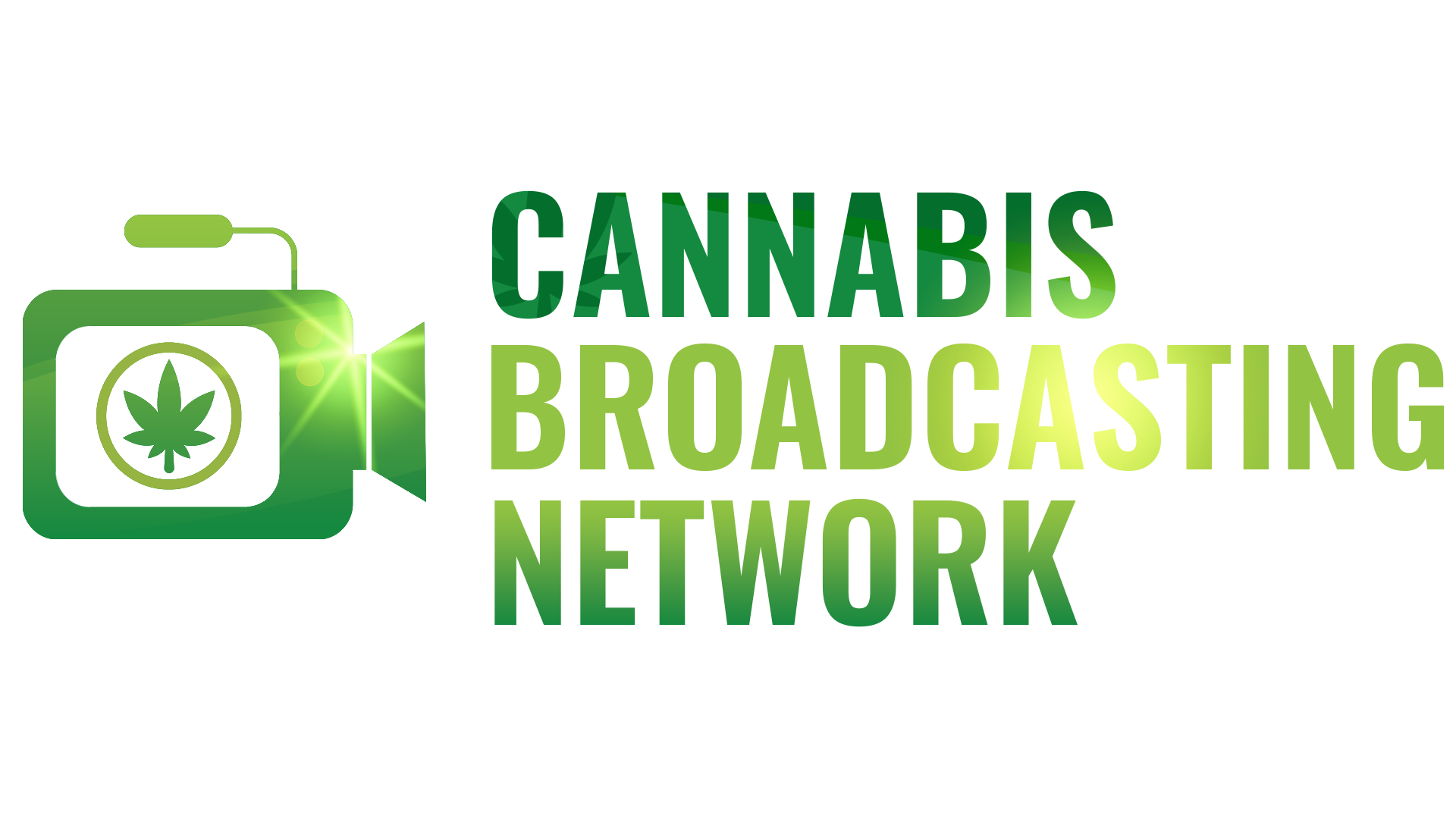

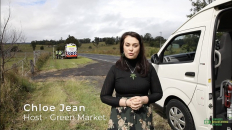
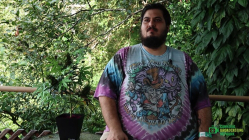
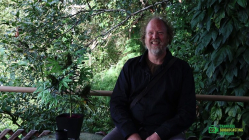
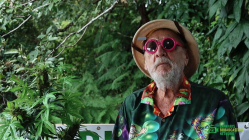
Add comment